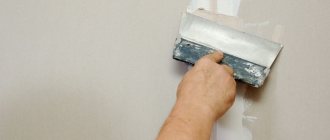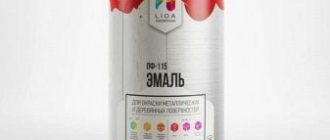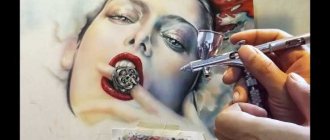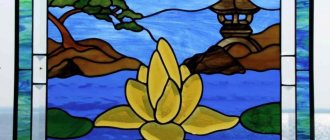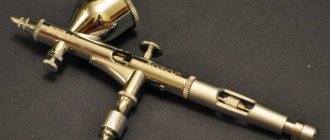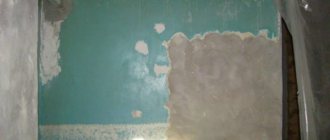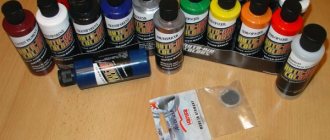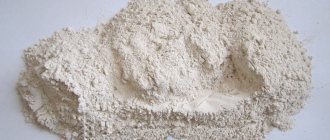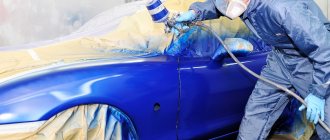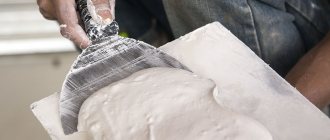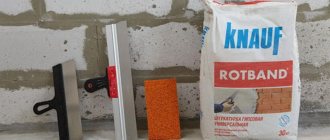ModelChemProduct. Pigments and chemistry
I took part in a repost competition and won a set of model chemistry and pigments from the Russian company ModelKhimProduct. As a result, I became the owner of a full range of their products, which I am very happy about. MHP is a Russian company. The guys live and work for the benefit of modeling (and not only) in Vladivostok. Judging by their VKontakte profiles, they are searching for planes from World War II. In general, interesting and enthusiastic people. With this article I will begin a series of reviews of ModelChemProduct .
Today, the full line of MHP products consists of 29 pigments, which, according to the manufacturer, do not require fixation on the model, 5 metallic pigments, three positions of model chemistry and model glue. Plus they produce themed sets of pigments.
Model chemistry ModelChemProduct is currently represented by three items: acrylic paint thinner for brushes and airbrushes, lightly scented white spirit and isopropyl alcohol .
The design of labels on 250 ml bottles certainly pleases me, as someone who deals with design in my daily work. The label is easy to read and not eclectic. I think it provides good brand recognition on the store shelf next to other products.
Model chemistry from ModelKhimProduct (MHP)
What solvent for acrylic paints?
Solvent R-12 acrylic, 1 l Solvent R-12 from the Arikon brand is used for diluting acrylic paints and varnishes. Also, R-12 Arikon solvent is perfect for diluting base...
Interesting materials:
Where do parcels arrive from Juma? Where does the Steam access code come from? Where does notification of delivery of a letter come? Where do squirrels go in winter? Where did Agatha Christie go? Where did singer Yulia Savicheva go? Where did the saved masks on Instagram go? Where are the themes downloaded? Where are videos downloaded from Teams? Where to go with a 1 5 year old child in Tyumen?
What you will need
For painting, you need to prepare the following materials:
- paints;
- diluent;
- varnish;
- solvent;
- palette;
- tassels.
When using acrylic paints to decorate parts made of plastic, their surface is first primed. The procedure must be performed, otherwise the dye will collect in drops and roll off. In addition, the primer helps to detect unevenness and other defects, which can be puttyed, cleaned and re-primed. It is recommended to use compounds intended for polystyrene.
For painting parts or finished products, acrylic-based paints that are soluble in water are used.
Color matching table for different paint brands:
| Color | Star | Tamiya | AKAN | A-model | Model Master | Humbrol |
| White | AKP – 17 | XF-2 | 78001 | AMP – 005 | 1768 | 34 |
| Black | AKP – 20 | XF – 1 | 78003 | AMP – 016 | 1747 | 33 |
| Red | AKP – 12 | XF-7 | 76004 | AMP – 023 | 174 | |
| Blue | AKP – 58 | XF-8 | AMP – 055 | 1772 | 165 | |
| Green | AKR – 35 | XF-5 | 70007 | AMP – 010 | 1764 | 76 |
| Grey | AKR – 31 | XF-53 | 73068 | AMP – 012 | 1741 | 28 |
| Orange | AKR – 33 | X – 6 | AMP – 015 | 1527 | 18 | |
| Beige | AKR – 29 | XF-78 | 83089 | AMP – 053 | 1709 | |
| Brown | AKR – 57 | XF-68 | AMP – 003 | 1701 | ||
| Bodily | AKR – 53 | XF-15 | 79000 | AMP-076 | 1516 | 63 |
| Khaki | AKR – 45 | XF-49 | 73077 | AMP – 026 | 1712 | 159 |
| Bronze | AKR – 04 | X – 33 | 86011 | AMP – 059 | 55 | |
| Gold | AKR – 03 | X – 12 | AMP – 061 | 1744 | ||
| Brass | AKR – 37 | XF-3 | 76025 | 1782 | ||
| Copper | AKR – 09 | XF-6 | AMP – 015 | 1551 | ||
| Aluminum | AKR – 06 | XF-18 | 76004 | AMP – 056 | 1781 | 27001 |
| Tree | AKR – 25 | XF-78 | 79023 | AMP – 021 | 1735 | 110 |
| Sand | AKR – 11 | XF-78 | AMP – 019 | 1706 | ||
| Olive | AKR – 24 | XF-62 | AMP – 022 | 1711 | 155 | |
| Leather | AKR – 27 | XF-57 | 79041 | AMP – 016 | 1736 | 62 |
| Rubber | XF – 10 | AMP – 016 | 1583 | |||
| Rust | AKR – 10 | XF-9 | 76012 | AMP – 044 | 1785 | |
| Dark brown | AKR – 38 | XF – 10 | AMP – 038 | 1540 | ||
| Light brown | AKR – 15 | X – 72 | AMP – 038 | 1533 | ||
| Yellow-olive | AKR – 18 | XF-49 | 73075 | AMP – 026 | 1716 | 94 |
| Matte black | AKR – 20 | XF – 1 | 78003 | AMP – 006 | 1749 | 33 |
| Semi-matte black | AKR – 20 | X – 1 | 78004 | AMP – 006 | 1597 | 85 |
| Ivory | AKR – 17 | XF-2 | AMP – 060 | 2709 | ||
| Gray medium | AKR – 32 | XF-22 | 71101 | AMP – 002 | 1721 | 145 |
| Dark tank gray | AKR – 14 | XF-24 | 71005 | AMP – 002 | 2094 | |
| Aviation gray | AKR – 23 | XF-82 | 70016 | AMP – 017 | 1731 |
Distilled water is used as an acrylic thinner, but some modellers use alcohol.
To protect the finished model from external influences, after the dye has dried, it is coated with varnish. This allows you to subsequently wash the products under running water without fear of damaging them. Only special compounds are suitable for acrylic; others may cause the coating to swell.
When working with acrylic paints, you should have a solvent on hand. It is necessary for soaking brushes after work so that they can be reused, as well as for removing accidental drops from the surface being painted.
To dilute paints with water or mix different colors together, you need a plastic palette or other similar containers.
The main tool for painting products is brushes with soft bristles that do not leave marks. To give the surface a wood texture, it is recommended to use small diameter bristles. Professionals use an airbrush instead of a brush.
To trim and process the prefabricated model, you will need the following tools:
- wire cutters;
- special model knife;
- sandpaper of different grain sizes;
- needle file;
- putty and spatula (flat-head screwdriver) to remove unevenness.
To connect parts, the kit often already contains a tube of special glue. If it is not available, it is recommended to buy an adhesive composition marked EXTRA THIN.
To degrease surfaces, use alcohol or a special composition for nails.
To avoid staining the desktop with paint, cover it with old newspapers or film. And in order not to hold the model and its parts in your hands during the painting process, you need to make a stand (you can use toothpicks).
"Skillfully"
Now you know how to thin acrylic paint. All that remains is to choose the most suitable method and proceed to action. Be careful, because not every method described above may suit you. Sometimes it’s just enough to buy high-quality enamel and dilute it with water. You can do this at the Umelya craft supply store.
We sell high-quality, hypoallergenic acrylic art paints in seven bright colors in 90 ml jars. You can find out more about them by calling our consultants, who will answer your questions and help you order paint at a good discount.
We will be glad to see you among our clients. We are sure that acrylic paint produced by , will pleasantly surprise you with its quality and low price.
How to choose a painting method
Before professionally painting your collection, it is recommended to practice on small models, the kit of which includes parts made of multi-colored plastic with stickers. Such products only require gluing; painting is not necessary. Then you can purchase products that require decoration of the entire surface.
Methods for painting models.
The painting method is selected depending on the size of the workpiece:
- small parts are painted with a brush;
- For larger models, you can use an airbrush.
The first option will be cheaper. The second method is more expensive, it is used by experienced craftsmen, but it is faster and more effective. When using an airbrush, you will additionally need a compressor and a hood.
Before you start designing your collection of military equipment, it is recommended to practice working with a brush on glass. If after several attempts you cannot apply the paint without streaks and bumps, then it is better to use an airbrush or aerosol cans with the desired colors.
How to restore acrylic paints if they have dried out?
Reanimating dried paint
- Make a lot of holes in the paint with a toothpick: the more, the better.
- add boiling water, close the lid tightly and let the water cool.
- Drain the water and mix thoroughly, rubbing out all the lumps.
- repeat the procedure several times.
Interesting materials:
What to do if your car is locked in the parking lot? What to do if the culprit does not have insurance? What to do if the participant in the accident does not admit his guilt? What to do if your Apple Store and iTunes account is blocked? What to do if your account is blocked? What to do if Google deleted it? What to do if you deleted Microsoft Store? What should I do if I deleted my computer? What to do if you deleted Google Play services? What should I do if I deleted a device in Device Manager?
Water
This paintwork material is water-based and can be diluted with water. After drying, the paintwork will become waterproof. Therefore, try to clean your brushes before they dry out. Otherwise, they are destined to go into oblivion.
This method does not suit everyone. Some artists want to not only dilute the paint, but also partially change its properties, for example, make it glossy.
Special equipment
When choosing what to dilute acrylic paints with, try using a special product (solvent). It is often recommended by paint manufacturers themselves. It can not only dilute the material, but also makes the applied layer matte or glossy.
Before you begin the dilution procedure, consider all available methods and decide which one is more suitable. It would also be a good idea to experiment, since the low price of paints and varnishes allows you to do this without much expense.
Dilute dried paint
It happens that acrylic enamel dries out and becomes unsuitable for work. Many people think that it should be thrown away, but this is the wrong decision. “Resurrecting” it is quite simple, but you should understand that it will no longer have the highest quality inherent in a new product:
- First, chop the mass with a knife or any sharp object.
- Pour hot water (preferably boiling water) to the top of the container.
- After cooling, pour out the water and refill.
- Drain the water and stir the cooled mixture.
- Voila! After 2-3 minutes the paint is usable again.
Dilute paint to save it
If you want to save material and are looking for something to thin out acrylic paints, use a primer. It does not need to be mixed with paint and varnish material. The surface is coated with a primer before starting work. This action allows you to significantly save paint consumption and not lose the brightness and saturation of colors.
Specialized thinner
When looking through the options and thinking about how to dilute acrylic paints, it is worth mentioning a special thinner. It helps the material remain in working condition for a longer time (prevents rapid drying) and does not contribute to the loss of brightness and saturation.
You can buy such a thinner in many stores specializing in the sale of paints and varnishes. A specialized solvent can be an excellent assistant for beginners and experienced artists.
Color paste
For those who are thinking about how to dilute artistic acrylic paints, we can recommend color. It can make the enamel more liquid. It is worth knowing that this paste in large quantities can lead to loss of durability of the painted surface. Be careful when mixing and follow the proportions indicated on the paste packaging.
Good day, my dear readers!
Dmitry Ignatichev is in touch - your guide in the world of scale modeling.
A new article is a great opportunity to add another section to the information structure of my project. This section will be called PAINTS. Painting the model is one of the most interesting and time-consuming stages of creating a scale model. This requires not only the desire to paint the model, but also sufficient practice. Painting a model requires precise scientific knowledge of the composition and characteristics of the painting material. It may not be in-depth or professional. But even a general understanding of chemical and physical properties will greatly facilitate the work. You will begin to understand how the components of a material affect the process of painting a surface. You will begin to understand how different types of paints interact with each other. What and how should be combined.
MAIN
YOU WILL STOP ACTING AT RANGE.
And you will move forward in mastering the science of modeling systematically and consciously.
Today we will talk about the basics of understanding the properties of model paint. Whatever type or manufacturer of paint you use, it will consist of the same components.
PAINT COMPONENTS
Pigment
Pigment is the basic base of paint. It gives it color, creating opacity. The main qualities of pigments specified by manufacturers: significantly lower density compared to ordinary art paints. And light fastness. For example, some cheap paints can fade very quickly. And when painting, apply a thick paint layer, behind which the thin jointing lines will be hidden.
Binder (glue, binder)
This substance determines the possibility of strong connection of pigment particles with each other. It also causes paint to stick to the work surface. In general, binder is a multifunctional substance. Determines the speed and quality of polymerization. How resistant the paint will be to abrasion and other traumatic influences. Essentially, binder determines the difference between paint types. The main binders used in the production of model paints are acrylic resins and linseed oil.
Vehicle (solvent, thinner)
If the paint consists only of pigment and binder, it will turn out extremely thick. And it will be completely unsuitable for work. It is the solvent that gives the paint its fluid properties, allowing it to be applied in the thinnest layer.
Additive
Paints can also contain specialized additives. They are used to enhance well-defined paint characteristics. Each manufacturer develops its own additive system. Therefore, you can notice with the naked eye that paints from different manufacturers behave differently. Often the following elements may be added:
- Drying time accelerator/retarder
- Additives that give paint a glossy/matte property
- Special preservatives
Modeler's paints
After we know (albeit superficially) the structure of the painting material, we can distribute them by type.
ACRYLIC PAINTS
Acrylic paints use acrylic resins as a binder and water or alcohol as a solvent. They are easy to handle and safe to use. Non-toxic and dry quickly. They have a low odor and are suitable for both brush and airbrush. This is probably the most popular type of paint used on scale models today.
Acrylic paints AKAN
Since acrylic can be diluted with water and equipment can be cleaned with alcohol, they are very easy to use. However, care must be taken with acrylic paints because they can dry very quickly and, once dry, are difficult to remove from the airbrush. Most manufacturers produce solvents to work with their ranges of paints, so it will still be better to use them. Water and alcohol will also work as a solvent with most acrylic paints, but they won't always give as good results.
Many acrylic paints come in metal tubes similar to oil or watercolor paints. They are produced for artists, and are not as good at modeling as paints specifically made for modelers.
Although acrylic paints are very different from enamel paints, they are no worse and that is why they are so widely used today. However, acrylic paints are not very good where you need to mix different colors, such as when painting faces on figurines. Many modelers use acrylic for clothing and oil paint for faces.
ENAMEL PAINTS
Model enamels use oil as a binder, and white spirit or turpentine as a solvent. Model enamels are air-dried paints and can be glossy or matte. Model enamels are very similar to oil paints, and in some cases can be mixed with them. They are usually sold in small metal cans. The color reproduction is done exactly in accordance with the colors of military aircraft and vehicles, which is why a huge number of modellers use enamels when painting their scale models.
Humbrol enamel paints
Today, a large number of manufacturers produce enamel paints in a huge range of colors, comparable only to the range of acrylic paints. Enamel paints provide a fairly durable layer, but are not as convenient to use as acrylic paints, because they must be diluted with white spirit. They are flammable, toxic and smell bad, but this disadvantage should not be overestimated. Use enamel paints in a well-ventilated area and you shouldn't have any odor problems. Their advantage is that they dry slowly and even after they have become non-sticky to the touch they can be softened or removed again with a solvent. This makes working with them less stressful, especially when using airbrushes.
OIL PAINTS
Oil paints have much in common with model enamels, and also use oils as a binder and white spirit as a solvent. Oil paints have been used by artists for hundreds of years, and are typically sold in all art stores, not just model shops.
Oil paints are sold in metal tubes and look like a thick paste. You will need to add a large amount of solvent to the paint to obtain a consistency suitable for modeling. You can dilute them with white spirit or linseed oil, which will make them more glossy.
In model making, oil paints are practically not used for application with a brush or airbrush when painting the entire model. Their main use is to create filters, washes, smudges and rust effects. Many modellers also use them for painting figures. They are quite expensive, so always buy only quality paints, the pigments will be smaller and denser, and the paint itself will have greater durability.
TEMPERA PAINTS
An adhesive material, such as egg yolk, is used as a binder for pigments in tempera paint. It has very limited uses and can only be used for painting figures.
Tamiya paints
At this point, we have looked at the basic characteristics of model paints. Of course, it's too superficial. But I did not set myself the task of clarifying them in depth for you. We are not chemists - production workers. And we have no plans to make paint in the near future.
The next stage will be an analysis of paints by manufacturer. Every modeler (especially those striving to become a master in this matter) should know the properties of paints from the main manufacturers. But we’ll leave that for future articles.
In preparing the material for this article, data from the site https://www.world-model.ru was used
For today I say goodbye to you.
PS If you have any questions or have better knowledge on this issue, write to me. In the comments, or by email.
Step-by-step instructions for coloring
To get beautiful examples of the navy, military aircraft and other equipment, when painting products you must follow a sequence of actions.
Preparation
The surface of the product parts must be prepared for painting by eliminating all defects and making them smooth. Many modellers use skins in their work - from the largest to the smallest.
The skin is pre-moistened with water. Then the workpieces are rubbed with it until all the flaws disappear and the surface becomes smooth. After sanding, the parts are fixed on previously prepared stands.
Surface degreasing
For better adhesion of dyes, products are degreased. It is better to use alcohol or gasoline for this procedure. If detergents are used, after the degreasing procedure, the workpiece must be thoroughly rinsed with water and dried thoroughly.
Degreasing surfaces of the model.
Primary primer
Priming prevents the paint from peeling off after it dries. If drops were left on the surface of the workpiece during priming, it is not recommended to wipe them off immediately. You need to wait until they dry and then cut them off.
Intermediate grinding
If after applying the primer layer the surface of the model has lost its smoothness, you need to perform intermediate sanding. For this, fine-grained sandpaper is used.
Finishing primer
A repeated priming procedure is necessary in order to cover the entire surface of the prefabricated model with primer material, since in some places during the grinding process the primer could have been removed right down to the plastic.
The model is covered with primer material.
Painting the model
To properly paint an assembled copy of a vehicle, you need to set the basic tone. This is the color that is most abundant in the paint scheme.
If the predominant color is light, then it is recommended to pre-paint the workpiece white. Then the main tone is applied in several thin layers to the entire surface of the product, but only if it is not red.
After applying the last layer of paint, the surface is covered with colorless varnish.
When applying camouflage, you must adhere to the following rules:
- Light colors are initially applied, then dark ones;
- unpainted areas are covered with tape or other materials.
White spirit with a slight odor from ModelKhimProdukt
It really has a very light, almost unnoticeable scent, which makes me very happy, living in a small apartment with my wife, who is not to blame for my passion for models. You can safely work with this thinner without the threat of conflicts with household members :). White spirit from ModelChemProduct is suitable for thinning enamel paint from Tamiya, creating filters and washes from oil paint and many other painting and painting works in model making. The label says that white spirit can be used to degrease the model before painting. As practice shows, white spirit is quite aggressive towards polystyrene. I noticed that with prolonged contact with white spirit, the plastic loses its elasticity and begins to crumble. Therefore, it must be used as a degreaser with great care, especially for small parts.
White spirit with a slight odor ModelKhimProdukt (MHP)
White spirit ModelChemProduct. Label
White spirit ModelChemProduct. Label

